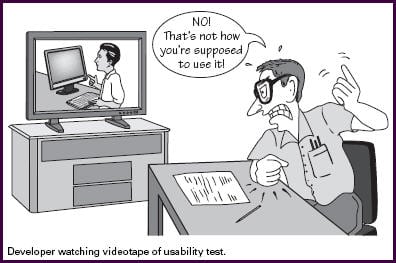
What is Amazon CloudFront?
21st August 2020
Important Benefits of Social Media Marketing
27th August 2020Usability Testing is a realm of the IT world that tries to incorporate how “people” would like their applications to be– which is never easy. It is like trying to read minds. What sounds like common sense, is a profound science when it comes to testing usability.
What Is Usability Testing?

A usability test makes sure that the interface of an AUT is built in a way that fits the user’s expectations with respect to meeting requirements (effectiveness) easily (efficiently) in a simplistic satisfying manner.
The primary focus is on:
- Ease of use
- Ease of Learning or familiarizing with the system
- The satisfaction of the user with the entire experience
Usability has many dimensions to it. It is all about the user’s ‘experience’ during their interaction with an application and their ‘feeling’ towards it. A structured Usability Test translates this experience/feeling into a Validation Process.
Why It Is Performed?
The Web and mobile applications rule the business world in recent times. These apps being efficient, effective, easy, simple, appealing, engaging, etc. is very critical for them to be embraced by the customers. The Usability Test is all about determining if a site is what the user would want to use and come back to or not.
This not only applies to software systems. Any machine/interface that has human interaction has got to satisfy these rules. How do you ask? Democracy would suffer if the voting machines were not usable. I wouldn’t vote if I had to click more than one button to choose my candidate, would you? Exactly!
When Is Usability Testing Conducted?
As testers, we know that the earlier a defect is found in the SDLC the cheaper it is to fix it. The same concept holds true for testing Usability also.
Usability Test results affect the design of the product. So, ideally, the usability test should start at the design level. But that is not all; software undergoes many changes/interpretations/implementations throughout the SDLC process. To make sure that we do not make usability related mistakes at any of these steps – this testing should be conducted often and continuously for maximum results.
How It Is conducted? – Methods
Testing is a validation of software against its requirements. Usability test is not different – The only requirement, in this case, is to validate if the software is as per a mental map of how a user would want the software to be like, what makes it comfortable for them to use, what kind of holistic experience is the user going to take away from the interaction, etc.
These are just a few of the ways in which this testing is carried out :
Method #1) During the design phase, you could just take draw your website/application design on a piece of paper and evaluate whether it is going to work or not.
Method #2) An exploratory method would be to build the site and perform some random tests (by the development/design/QA- any or all internal teams) to determine usability factors.
Method #3) Hire a set of real-time users to work on the site and report results.
Method #4) Use a tool that would provide statistics based on the input wireframes and designs submitted.
Method #5) Hire a third-party usability team that specializes in this field.
Method #6) Submit your site design and wireframes to an external evaluator and get results from them.
The structured Usability Testing process contains the following steps:
Step #1) Identifying the users to perform the Usability Test – it helps to choose the set of users that is close to how the real-time users are going to be. Care has to be taken not to pick experts or complete newbies. The experts are going to simply run through the entire process and the novices need lots of background training to even get started- neither situation is optimum.
Step #2) Designing the tasks that the users are going to perform on the application –A list of situations that the users are going to use the application form is to be made prior to starting the test. This can include something like: ‘Search for an X-box and buy it” or ‘submit a customer care question” etc. on an eCommerce site. The tasks should closely represent the real transactions the users would use the site for.
Step #3) Facilitating the testing – The usability team will have the users perform the tasks on the site and are going to gather information regarding the test progress and results. It really makes a huge difference when the design team participates while the users are working on the application. It gives them a better picture of how the app was used and where it did not deliver what the user wanted etc, firsthand.
Step #4) Analyze results – At the end of the test, we might end up with the time it took to perform tasks, whether the task was successful or not, etc, so basically raw data. The results have to be presented to all the stakeholders and analyzed for the identification of potential problem areas.





